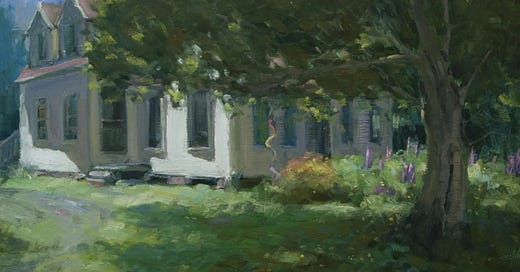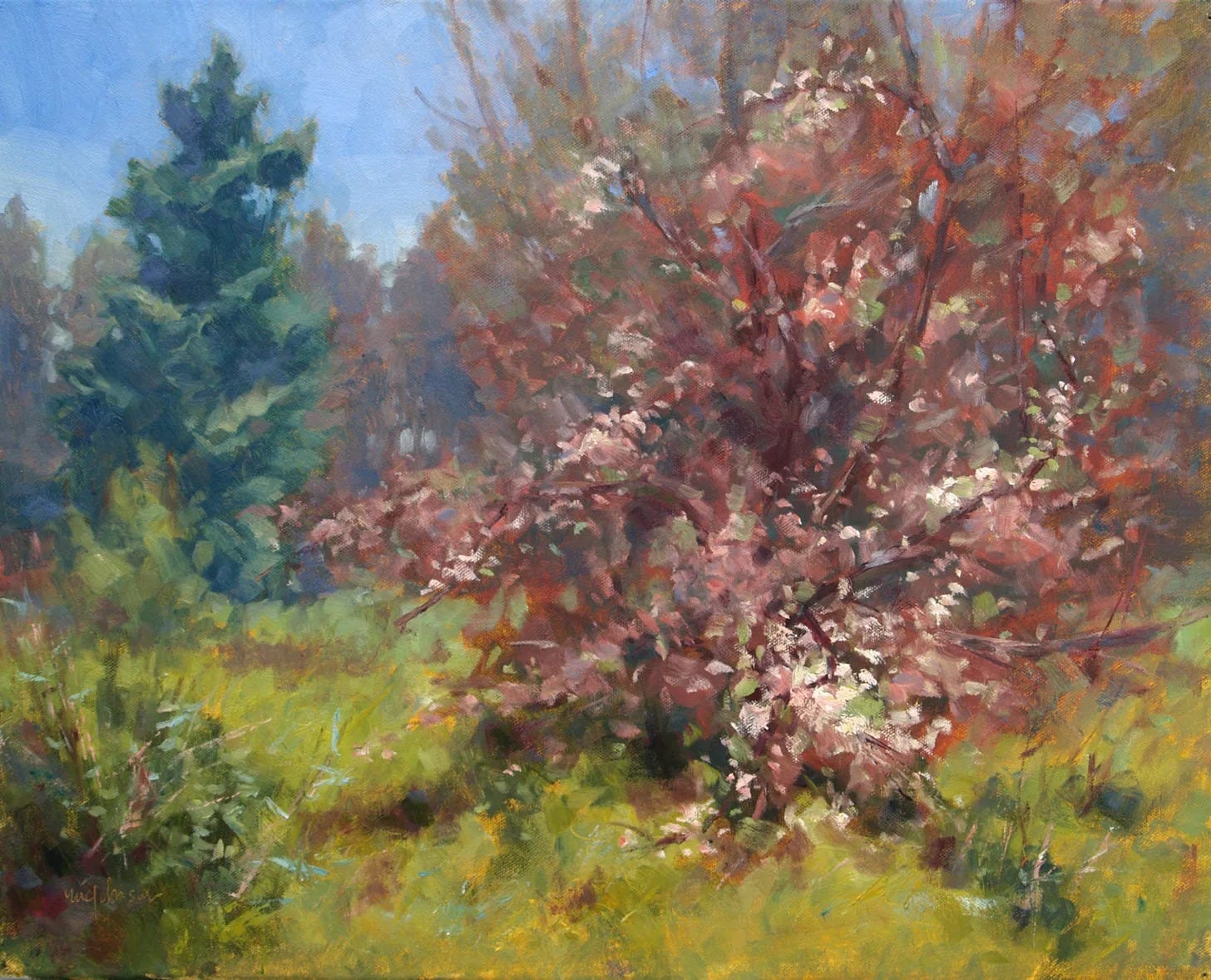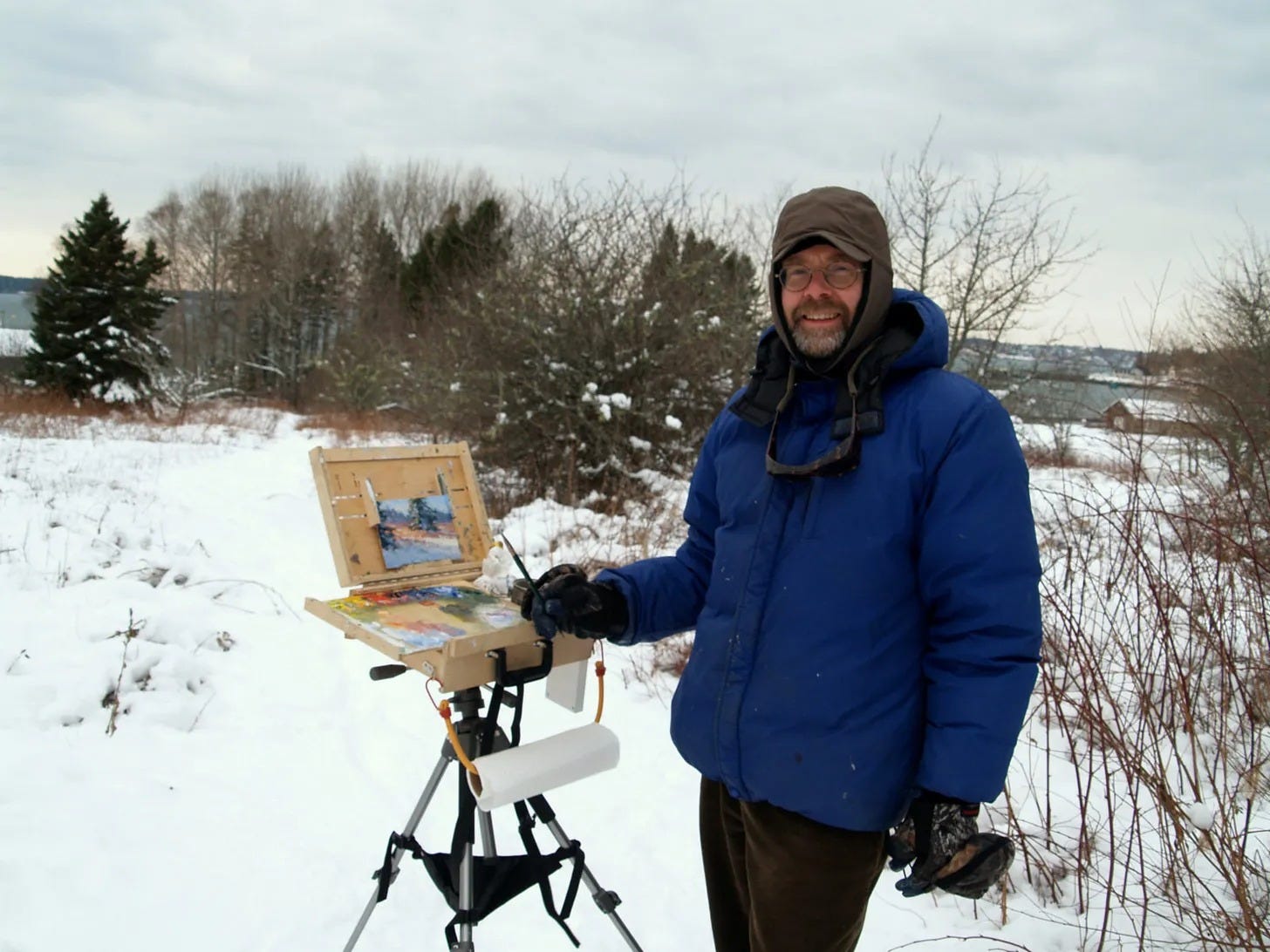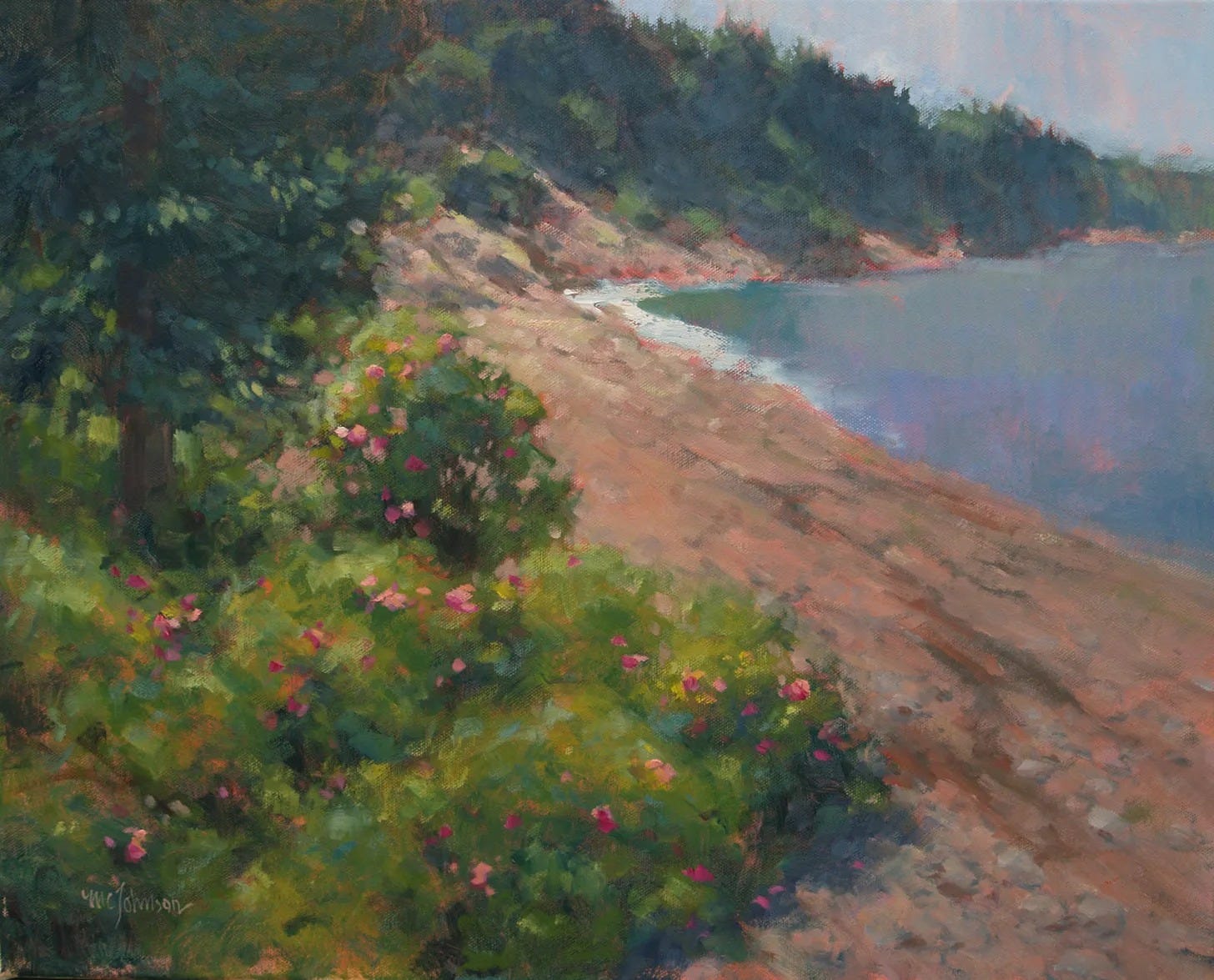[A slightly different version of this column appears in my other Substack, Writing to See.]
In a few short days, I'll be flying off to my summer studio on Campobello Island. For those of you who don't know, that's in New Brunswick, Canada. This summer marks my 20th year on the island. We bought a home there in 2005, and soon after, I applied for and received a work visa to run a gallery and teach workshops. As an American artist looking for a beautiful place to paint, I am grateful to the Canadian government for having let me live and work on this very special island for many years.
The island, a bit of land lodged in a waterway between Canada and the U.S., has its challenges. If you need to do business on the Canadian mainland, lack of a proper ferry—the one ferry runs just summers and keeps short hours—often means taking the bridge, which connects the island only to Maine, and not one but two border crossings, plus a lengthy drive. As for services, the island has some, but they are limited. The grocery store resembles more of a "camp store" catering to provincial park visitors. Although there is a clinic, it is staffed by a nurse and only on weekdays. Gas station? No. Bank? No. And I don't think you'll find an Uber driver on the island, although there is a fellow who drives a van and gives tours.
But little of this has made any difference to me as a painter. Although the nearest art supply store is a good two hours away, I was able to mail-order art supplies from both Canada or the U.S. As a landscape painter, I found plenty of material in the island's two parks—one-third of island is park land, most of it natural area—and around the picturesque wharves and lighthouses. As for running my studio gallery, I had enough tourist traffic to sell well during the summers. And as for teaching, I enjoyed sharing my favorite painting spots through back-to-back workshops. My challenges were few, my pleasures, many.
When we first moved to Campobello, we stayed for two full years. We experienced the quiet and silence of a popular summer destination in the off-season. I got to witness "sea smoke"—thin tendrils of ice fog that form over the ocean in winter. I also discovered the miracle that happens when the tide goes out on an otherwise icebound beach; it leaves behind a lane free of ice, making it possible to take a walk when inland roads remain snow-covered. And the eagles! Even in winter, sometimes a dozen of them would hover high in the wind over the open sea.
After those two years, we began to spend only six months at a time there, centering around summer. (Having lived for 20-plus years in Vermont, we felt we'd done enough deep winter. Plus, I had to go somewhere else to make a living in that dead season.) We usually arrived in May, before the first birches and maples began to bud out. In the quiet that occupies the time before summer, we enjoyed empty trails and watched the unfolding of spring: the tiny flowers of twinflower and wood sorrel, the return of the song sparrows, the gradual disappearance of rafts of seaweed from the beaches, pushed up by winter storms. It was a time to clean up the yard, to pick up fallen branches and clear the damp clots of leaves from the flower beds. Later, after summer, we'd enjoy another quiet season as the bracken in the fields turned to rust and the goldenrod nodded off from yellows to browns.
Then one year we sold our house, opting to move in next door with the in-laws, who had bought their house shortly after we had bought ours. We began to limit our time on Campobello to just for three months in the summer.
Now, our trip from New Mexico to "back east" starts in early June. We get to enjoy the wave-like progression of spring as we drive across the country, following the budding of trees and wildflowers. By the time we arrive on Campobello, the lupines, sunset pink and deep sea purple, are just starting. Summer residents are busy opening houses—airing out the musty smell that comes with a house closed up for months on a damp island—and painting exterior walls stripped by winter gales.
And, sadly, we leave at the end of August, too soon to see the sometimes-subtle, sometimes-dramatic, change in color in the maples and brambles. But summer always gives us a rich experience, and we have many vivid memories of our longer seasons on the island.
(This year, things will be a bit different. Rather than drive, we're flying. Last spring, we almost died in Dallas on I-10. An SUV directly in front of us careened off first the right and then the left concrete barricade, only to disintegrate and become airborne. Our car, thanks to its anti-collision braking system, decelerated from 75 to 0 in just a few seconds, coming to a full stop just 50 feet from the wreck. This accident, and increasingly rude drivers and busy roads, has encouraged us to give up the long drive.)
When I arrive on Campobello, before even setting up my studio, I'll walk into the woods behind the house to see what trees the wind may have downed across our trails. I'll clear what I can, avoiding crushing any of the beautiful, rich-green mosses that carpet the forest floor. Then I'll head down to our beach along Friar's Bay to see if the storms brought up any new sea glass or potsherds. After that, I'll make my way to the parks or perhaps the Head Harbour Lightstation, which overlooks the deep, cold waters of the Grand Manan Channel, and where, come August, I'll watch finback whales breaching.
Once I'm satisfied that little has changed on this small island, and only then, will I head to my studio to set up my easel and paints.
Here’s a brief video tour of my current studio on Campobello:








What a life — New Mexico in winter and east coast in winter! Lucky you.
Are you offering g classes in Canada this summer?
Love your paintings of your place in Campobello island and that’s an amazing studio! Your descriptions made it very easy to imagine the beauty of your “home away from home”. Hope you both have a safe, easy journey!